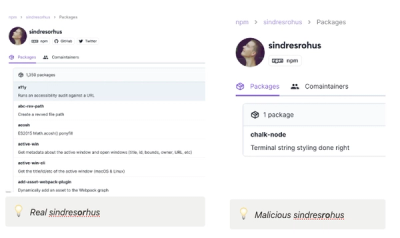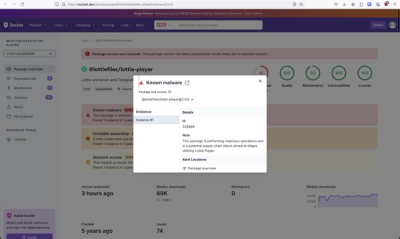Regular Expression Tokenizer
Tokenizes strings that represent a regular expressions.


Usage
const ret = require('ret');
let tokens = ret(/foo|bar/.source);
tokens will contain the following object
{
"type": ret.types.ROOT
"options": [
[ { "type": ret.types.CHAR, "value", 102 },
{ "type": ret.types.CHAR, "value", 111 },
{ "type": ret.types.CHAR, "value", 111 } ],
[ { "type": ret.types.CHAR, "value", 98 },
{ "type": ret.types.CHAR, "value", 97 },
{ "type": ret.types.CHAR, "value", 114 } ]
]
}
Reconstructing Regular Expressions from Tokens
The reconstruct function accepts an any token and returns, as a string, the component of the regular expression that is associated with that token.
import { reconstruct, types } from 'ret'
const tokens = ret(/foo|bar/.source)
const setToken = {
"type": types.SET,
"set": [
{ "type": types.CHAR, "value": 97 },
{ "type": types.CHAR, "value": 98 },
{ "type": types.CHAR, "value": 99 }
],
"not": true
}
reconstruct(tokens)
reconstruct({ "type": types.CHAR, "value": 102 })
reconstruct(setToken)
Token Types
ret.types is a collection of the various token types exported by ret.
ROOT
Only used in the root of the regexp. This is needed due to the posibility of the root containing a pipe | character. In that case, the token will have an options key that will be an array of arrays of tokens. If not, it will contain a stack key that is an array of tokens.
{
"type": ret.types.ROOT,
"stack": [token1, token2...],
}
{
"type": ret.types.ROOT,
"options" [
[token1, token2...],
[othertoken1, othertoken2...]
...
],
}
GROUP
Groups contain tokens that are inside of a parenthesis. If the group begins with ? followed by another character, it's a special type of group. A ':' tells the group not to be remembered when exec is used. '=' means the previous token matches only if followed by this group, and '!' means the previous token matches only if NOT followed.
Like root, it can contain an options key instead of stack if there is a pipe.
{
"type": ret.types.GROUP,
"remember" true,
"followedBy": false,
"notFollowedBy": false,
"stack": [token1, token2...],
}
{
"type": ret.types.GROUP,
"remember" true,
"followedBy": false,
"notFollowedBy": false,
"options" [
[token1, token2...],
[othertoken1, othertoken2...]
...
],
}
POSITION
\b, \B, ^, and $ specify positions in the regexp.
{
"type": ret.types.POSITION,
"value": "^",
}
SET
Contains a key set specifying what tokens are allowed and a key not specifying if the set should be negated. A set can contain other sets, ranges, and characters.
{
"type": ret.types.SET,
"set": [token1, token2...],
"not": false,
}
RANGE
Used in set tokens to specify a character range. from and to are character codes.
{
"type": ret.types.RANGE,
"from": 97,
"to": 122,
}
REPETITION
{
"type": ret.types.REPETITION,
"min": 0,
"max": Infinity,
"value": token,
}
REFERENCE
References a group token. value is 1-9.
{
"type": ret.types.REFERENCE,
"value": 1,
}
CHAR
Represents a single character token. value is the character code. This might seem a bit cluttering instead of concatenating characters together. But since repetition tokens only repeat the last token and not the last clause like the pipe, it's simpler to do it this way.
{
"type": ret.types.CHAR,
"value": 123,
}
Errors
ret.js will throw errors if given a string with an invalid regular expression. All possible errors are
- Invalid group. When a group with an immediate
? character is followed by an invalid character. It can only be followed by !, =, or :. Example: /(?_abc)/ - Nothing to repeat. Thrown when a repetitional token is used as the first token in the current clause, as in right in the beginning of the regexp or group, or right after a pipe. Example:
/foo|?bar/, /{1,3}foo|bar/, /foo(+bar)/ - Unmatched ). A group was not opened, but was closed. Example:
/hello)2u/ - Unterminated group. A group was not closed. Example:
/(1(23)4/ - Unterminated character class. A custom character set was not closed. Example:
/[abc/
Regular Expression Syntax
Regular expressions follow the JavaScript syntax.
The following latest JavaScript additions are not supported yet:
Examples
/abc/
{
"type": ret.types.ROOT,
"stack": [
{ "type": ret.types.CHAR, "value": 97 },
{ "type": ret.types.CHAR, "value": 98 },
{ "type": ret.types.CHAR, "value": 99 }
]
}
/[abc]/
{
"type": ret.types.ROOT,
"stack": [{
"type": ret.types.SET,
"set": [
{ "type": ret.types.CHAR, "value": 97 },
{ "type": ret.types.CHAR, "value": 98 },
{ "type": ret.types.CHAR, "value": 99 }
],
"not": false
}]
}
/[^abc]/
{
"type": ret.types.ROOT,
"stack": [{
"type": ret.types.SET,
"set": [
{ "type": ret.types.CHAR, "value": 97 },
{ "type": ret.types.CHAR, "value": 98 },
{ "type": ret.types.CHAR, "value": 99 }
],
"not": true
}]
}
/[a-z]/
{
"type": ret.types.ROOT,
"stack": [{
"type": ret.types.SET,
"set": [
{ "type": ret.types.RANGE, "from": 97, "to": 122 }
],
"not": false
}]
}
/\w/
{
"type": ret.types.ROOT,
"stack": [{
"type": ret.types.SET,
"set": [{
{ "type": ret.types.CHAR, "value": 95 },
{ "type": ret.types.RANGE, "from": 97, "to": 122 },
{ "type": ret.types.RANGE, "from": 65, "to": 90 },
{ "type": ret.types.RANGE, "from": 48, "to": 57 }
}],
"not": false
}]
}
/./
{
"type": ret.types.ROOT,
"stack": [{
"type": ret.types.SET,
"set": [
{ "type": ret.types.CHAR, "value": 10 },
{ "type": ret.types.CHAR, "value": 13 },
{ "type": ret.types.CHAR, "value": 8232 },
{ "type": ret.types.CHAR, "value": 8233 }
],
"not": true
}]
}
/a*/
{
"type": ret.types.ROOT,
"stack": [{
"type": ret.types.REPETITION,
"min": 0,
"max": Infinity,
"value": { "type": ret.types.CHAR, "value": 97 }
}]
}
/a+/
{
"type": ret.types.ROOT,
"stack": [{
"type": ret.types.REPETITION,
"min": 1,
"max": Infinity,
"value": { "type": ret.types.CHAR, "value": 97 },
}]
}
/a?/
{
"type": ret.types.ROOT,
"stack": [{
"type": ret.types.REPETITION,
"min": 0,
"max": 1,
"value": { "type": ret.types.CHAR, "value": 97 }
}]
}
/a{3}/
{
"type": ret.types.ROOT,
"stack": [{
"type": ret.types.REPETITION,
"min": 3,
"max": 3,
"value": { "type": ret.types.CHAR, "value": 97 }
}]
}
/a{3,5}/
{
"type": ret.types.ROOT,
"stack": [{
"type": ret.types.REPETITION,
"min": 3,
"max": 5,
"value": { "type": ret.types.CHAR, "value": 97 }
}]
}
/a{3,}/
{
"type": ret.types.ROOT,
"stack": [{
"type": ret.types.REPETITION,
"min": 3,
"max": Infinity,
"value": { "type": ret.types.CHAR, "value": 97 }
}]
}
/(a)/
{
"type": ret.types.ROOT,
"stack": [{
"type": ret.types.GROUP,
"stack": { "type": ret.types.CHAR, "value": 97 },
"remember": true
}]
}
/(?:a)/
{
"type": ret.types.ROOT,
"stack": [{
"type": ret.types.GROUP,
"stack": { "type": ret.types.CHAR, "value": 97 },
"remember": false
}]
}
/(?=a)/
{
"type": ret.types.ROOT,
"stack": [{
"type": ret.types.GROUP,
"stack": { "type": ret.types.CHAR, "value": 97 },
"remember": false,
"followedBy": true
}]
}
/(?!a)/
{
"type": ret.types.ROOT,
"stack": [{
"type": ret.types.GROUP,
"stack": { "type": ret.types.CHAR, "value": 97 },
"remember": false,
"notFollowedBy": true
}]
}
/a|b/
{
"type": ret.types.ROOT,
"options": [
[{ "type": ret.types.CHAR, "value": 97 }],
[{ "type": ret.types.CHAR, "value": 98 }]
]
}
/(a|b)/
{
"type": ret.types.ROOT,
"stack": [
"type": ret.types.GROUP,
"remember": true,
"options": [
[{ "type": ret.types.CHAR, "value": 97 }],
[{ "type": ret.types.CHAR, "value": 98 }]
]
]
}
/^/
{
"type": ret.types.ROOT,
"stack": [{
"type": ret.types.POSITION,
"value": "^"
}]
}
/$/
{
"type": ret.types.ROOT,
"stack": [{
"type": ret.types.POSITION,
"value": "$"
}]
}
/\b/
{
"type": ret.types.ROOT,
"stack": [{
"type": ret.types.POSITION,
"value": "b"
}]
}
/\B/
{
"type": ret.types.ROOT,
"stack": [{
"type": ret.types.POSITION,
"value": "B"
}]
}
/\1/
{
"type": ret.types.ROOT,
"stack": [{
"type": ret.types.REFERENCE,
"value": 1
}]
}
Install
npm install ret
Tests
Tests are written with vows
npm test
Security
To report a security vulnerability, please use the Tidelift security contact. Tidelift will coordinate the fix and disclosure.




